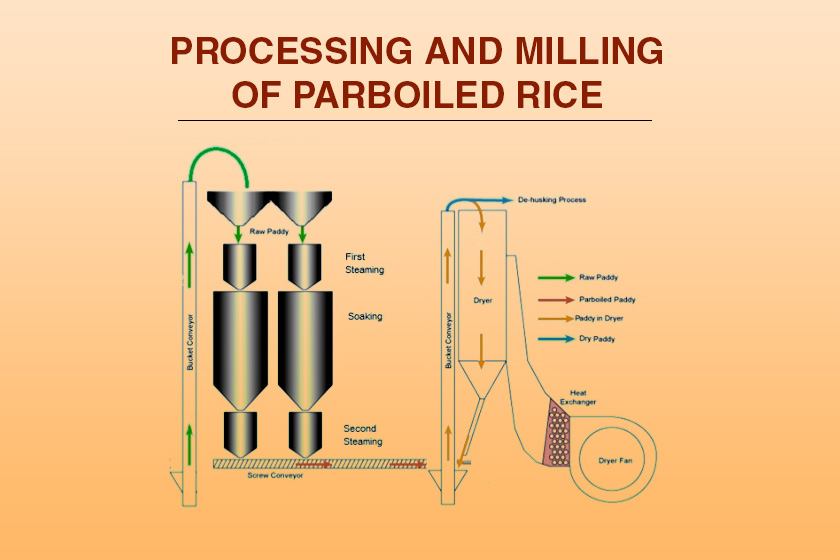Popularly known as the easy to cook rice, Parboiled rice actually connotes partially boiled rice that is the grain is simmered in the husk. Parboiled rice, thus apparently is a precooked form of rice, but on closer analysis is found to be erroneous. The final output appears like normal grain and is cooked and served like the original white or brown rice. Quite surprisingly, even with its unrefined appearance, parboiled is gaining popularity as apart from it facilitating digestion and restoring bowel function, it contains better health benefits in terms of fiber, calcium, potassium and vitamin B-6 due to its special processing.
Parboiled rice also contains a high content of antioxidants, phytonutrients including anthocyanins that reduce inflammation and even prevents cancer. Even a cup supplies 2- 3 percent of daily intake of calcium, potassium, iron, and manganese. While manganese reduces risks of blood pressure and heart attacks, zinc enhances the immune system. Parboiled rice is laden with nutrients like niacin, riboflavin and vitamin B6, necessary for metabolizing food into energy.
Nextech Solutions, India’s leading Rice Mill Consultants who have acted as Rice Mill Engineers & Designers in innumerable projects in India and across the world, can act as consultants or Rice Mill Project Consultant for this product anywhere in the world.
Parboiling Process
The three basic steps for parboiling comprise soaking, steaming and drying. As a collateral advantage, these enable rice to be more easily processed by hand, enhance its nutritional profile and alter texture. The triple process also imparts it the name of ‘soaking rice’.
The process begins with the drenching of the grain where the rice is transferred into the soaking tank at temperature at 20-30-degree C. The grain is then left for 36-48 hours as required. After drenching, the rice is shifted to the steaming process where the grain is heated in order to make it harder. The procedure too varies in time-consuming as the manufacturer needs.
The decision is made according to the grain color to be ultimately attained. Generally, the rule is that higher the heating temperature, the lesser the processing time. Yet, it must be considered that steaming at high temperature increases the chances of grain getting darker in color.
Ultimately, the grains need to be dried. Again the process of withering the grain in huge quantity is not quite facile, especially in case the rice is parboiled. So, instead of a labor-intensive country like India, rice the grains can be left for sun-drying/baking by employing greater numbers of workers. Their main task is to actively turn and mix the rice in a timely manner. Around 20-40% of moisture needs to be evaporated/ reduced initially while the remaining can be reduced at later stages of drying.
Nextech Solutions is India’s’ leading grain processing unit extending top-notch consultancy 360-degree concept to commissioning services. As the leading Rice Mill Plant Manufacturer in India, we provide Rice Mill Machinery for Rice Mill as well as total consultancy. Extensive experience and expertise garnered over years of operations globally enable us to offer total services in the field of parboiled rice replete with optimum efficiency, productivity in equipment and processes to enable maximum returns.
 MAIL US :
MAIL US :
 CALL US :
>
CALL US :
>
